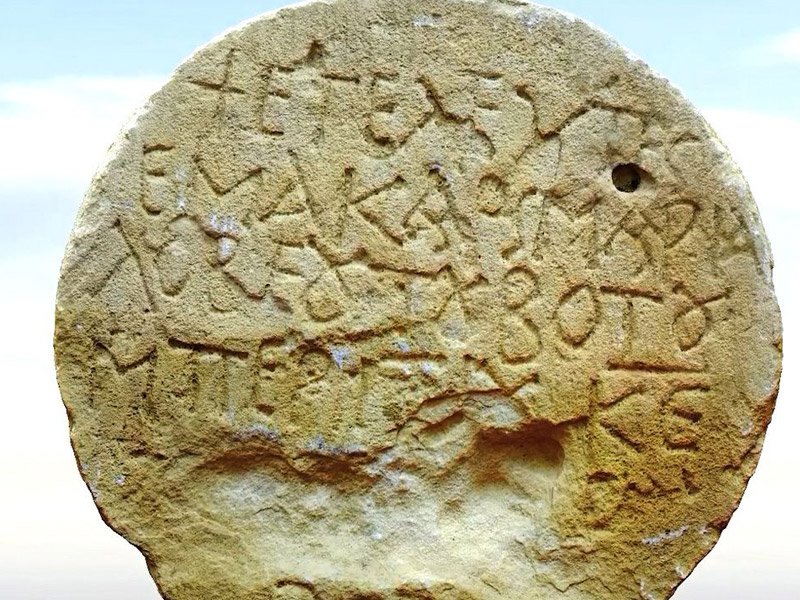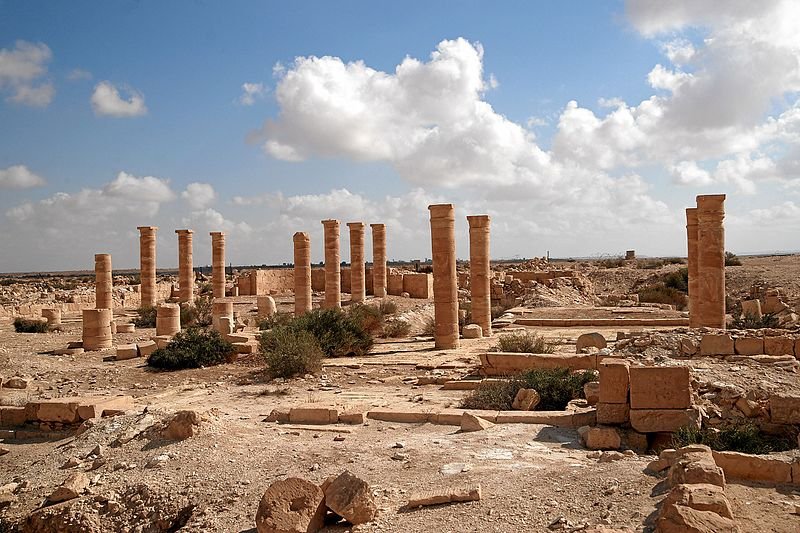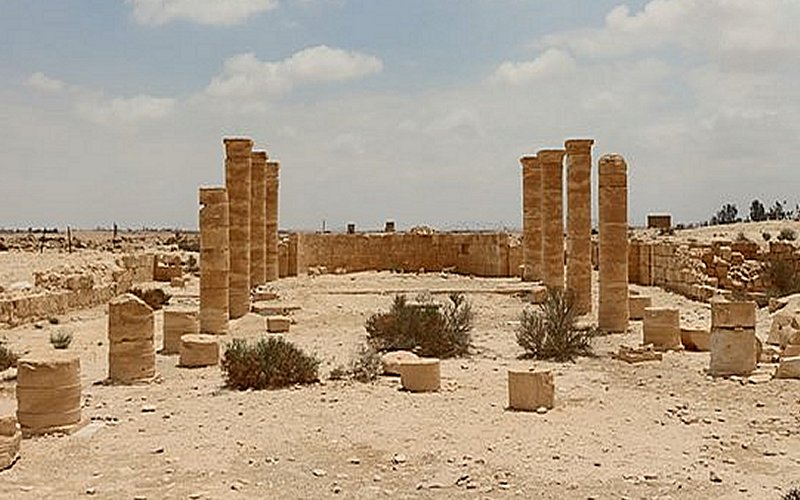Conny Waters – AncientPages.com – A stone bearing a Greek inscription dated to the end of the Byzantine period (the late sixth–early seventh centuries CE) was recently discovered last during maintenance works in the area of the Nitzana National Park in the Negev, Israel.
 The Byzantine period tombstone with the inscription in Greek. Copyright: Emil Aladjem, Israel Antiquities Authority.
The Byzantine period tombstone with the inscription in Greek. Copyright: Emil Aladjem, Israel Antiquities Authority.
The flat, round stone, approximately 25 cm in diameter, was used as a tombstone in one of the cemeteries surrounding the ancient settlement. The inscription on the tombstone is as follows: “Blessed Maria, who lived an immaculate life” and died on February 9th and was deciphered by Dr. Leah Di Segni of the Hebrew University.
The stone was left at the head of the path when it was noticed by David Palmach, the director of the Nitzana Educational Village, who realized that it bore an inscription. Palmach pH๏τographed and collected it to prevent from being looted.
He also contacted the Israel Nature and Parks Authority and the Israel Antiquities Authority, and the inscription is being transferred to the National Treasuries Dept.
 Nitzana ruins. source
Nitzana ruins. source
“Nitzana is renowned as a key site in research into the transition between the Byzantine and the Early Islamic periods,” said Tali Erickson-Gini of the Israel Antiquities Authority.
“During the fifth and sixth centuries CE, Nitzana acted as a center for the villages and settlements in the vicinity. Among other things, it had a military fortress as well as churches, a monastery, and a road station that served Christian pilgrims traveling to Santa Katarina, which believers regarded as the site of Mount Sinai.”
According to Dr Erickson-Gini, Nitzana was founded in as early as the third century BCE as a Nabatean road station on a major trade route and the place was inhabited intermittently for about 1300 years, until it was abandoned in the tenth century CE and its name was forgotten.
 Nitzana National Park. Image credit: Tripadvisor
Nitzana National Park. Image credit: Tripadvisor“Unlike other ancient towns in the Negev, very little is known about the burial grounds around Nitzana. The find of any inscription such as this may improve our definition of the cemeteries’ boundaries, thus helping to reconstruct the boundaries of the settlement itself, which have not yet been ascertained,” said archaeologist Pablo Betzer, Israel Antiquities Authority Southern District.
Written by Conny Waters – AncientPages.com Staff Writer





